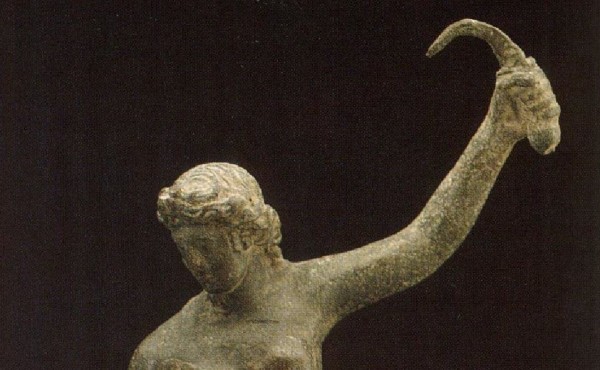In ancient Roman times, there were no words for a female gladiator. Gladiatrix is a modern term that came about in the 1800s used by historians to describe these unique female fighters. The closest word which can be used to describe a female fighter in ancient Roman times was ludia. However, ludia basically means “stage performer” and was used interchangeably and had a couple of meanings. In ancient times ludia usually meant “lover of gladiators” or “wife.”
With this said about female gladiators in respect to their language, there were in fact female gladiators. However, they were not as common as their counterpart male fighters. As we recall, females in ancient Rome had limited roles. It was considered taboo to see women fighting like men. Not to mention women really had a limited role in ancient Roman times. They were expected to be domestic and were not even considered a citizen. They were regarded more as property unlike today’s women. That is why when female gladiators did fight; a majority of their fighting was put near the main events in amphitheaters. Most of the female gladiators documented through historical record were outcasts and upper-class women seeking trills and fame. Much of what we know about female gladiators survives through archeological sites and a few historical documents.
Gladiators were all required to fight topless like their male counter parts. This is why when female gladiators fought; huge crowds were drawn because of the appeal to the audiences. It was believed that many of the female gladiators fought in the dark with torches illuminating them. To confirm this taboo practice of fighting virtually naked, there have been a few artifacts found that support this claim. Most notably is a famous bronze statuette of a female gladiator holding a weapon which appears to be a small knife. This artifact is currently being held by a German museum. It should also be noted that this artifact is considered the second instance of females embarking in gladiatorial games. The 1st depiction is a marble relief which is displaced at the British Museum which came from modern day Turkey. This marble relief depicts two females fighting like gladiators. This relief is dated from the first or second century.
The end of female gladiator games came in 200 AD when Emperor Septimus banned female gladiators or any women fighting in the arena. Yet, it has been suggested that still there were a few female fighters who refused to give up the art of combat. It is believed these few stragglers consisted of mainly wealthy women. It was not until Emperor Honorius finally ended gladiatorial events as Christianity was starting to take throughout the Roman Empire. More of Rome’s citizens were starting to find these competitions very savage as this new “mystic faith” also known as Christianity instilled compassion and mercy throughout Rome. The last known gladiatorial game took place in Rome of 404 AD under Honorius which involved gladiators. After that last gladiatorial game, there would never be any more merciless killing. After this chariot races and other less barbaric forms of entertainment were much more popular with the crowds.
Click on the below topics to explore and learn more about the Ancient Roman gladiators and how influenced Roman culture!


